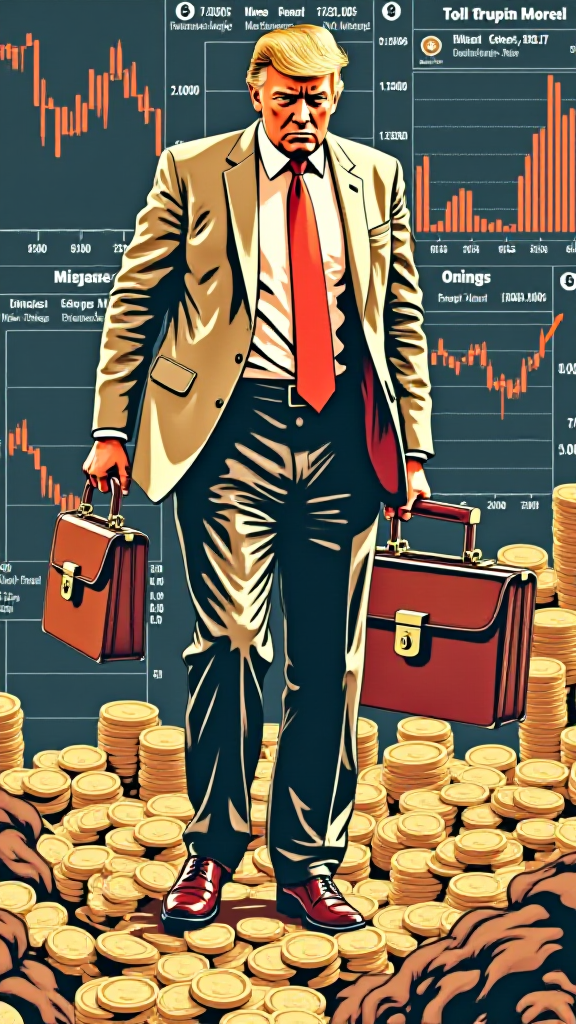Amazon's Tariff Transparency Tangle: A Clash of Commerce and Politics
The White House’s recent rhetorical assault on Amazon over its alleged plan to display tariff costs to consumers has ignited a political firestorm with profound implications for the retail giant’s strategy, its stock, and the broader economy. At the heart of the dispute is a reported proposal by Amazon Haul—a low-cost subsidiary—to label the financial burden of President Trump’s tariffs on product pages. The White House swiftly condemned the move as a “hostile and political act,” framing it as an attack on its “buy American” agenda. Amazon denied the plan, but the fallout underscores a growing tension between corporate transparency, trade policy, and the precarious balance of political alliances.
The Controversy Unfolds
The White House’s sharp rebuke centered on Punchbowl News’ report that Amazon Haul had explored displaying tariff surcharges “right next to” product prices. Press Secretary Karoline Leavitt accused the company of targeting consumers with politically charged information, questioning why Amazon had not similarly highlighted price hikes under the Biden administration. The administration’s rhetoric, however, went further, implying Amazon was “un-American” for not fully embracing its protectionist stance—despite being a U.S.-based firm.
Amazon swiftly denied the report, stating the idea had been “never approved” and abandoned. The subsidiary’s focus on ultra-affordable goods (under $20) suggests the plan was part of a competitive strategy to match rivals like Temu and Shein, which already disclose tariff surcharges. For example, Temu explicitly adds a 145% “import charge” to checkout totals, directly tying prices to Trump’s trade policies. Amazon’s refusal to adopt similar transparency, despite third-party sellers facing steep price increases (up to 30% on nearly 1,000 top products, per SmartScout), raises questions about its priorities.
The Political Calculus: Bezos vs. Trump
The conflict is inseparable from the long-standing feud between Jeff Bezos and Donald Trump. Their relationship has oscillated between uneasy truce and open hostility since 2016, when Bezos-owned The Washington Post scrutinized Trump’s policies. Trump retaliated by accusing Amazon of tax evasion and threatening to raise its shipping costs. While Bezos donated $1 million to Trump’s 2025 inauguration and aligned the Post with “free market” editorial shifts, the tariff dispute has reignited tensions. Critics argue Amazon’s reported $40 million deal to license a Melania Trump documentary smacks of political appeasement—a move that may not be enough to quell White House ire.
Economic Risks and Retail Realities
Economists warn that Trump’s tariffs—particularly the 145% surcharge on Chinese goods—are inflating prices for consumers and squeezing businesses. While Amazon claims only 1% of its top products saw significant hikes, third-party sellers face existential pressure. Competitors like Temu and Shein, unburdened by U.S. tariff obligations, are capitalizing on Amazon’s reticence to pass costs to consumers. The result is a fragmented retail landscape where transparency becomes a weapon: Amazon’s silence may protect its margins in the short term but risks losing customers to rivals who openly disclose pricing pressures.
Investor Implications
The stock market has already reacted. Shares of Amazon fell over 2% premarket following the White House’s condemnation, reflecting investor anxiety over regulatory risks and the company’s ability to navigate political headwinds. Longer-term, the tariff regime poses strategic challenges. If Amazon’s sellers continue absorbing costs, profit margins may hold—but at the risk of an exodus to cheaper competitors. Conversely, adopting transparency could alienate the administration further.
Conclusion: Navigating the Crossroads
Amazon’s tariff dilemma is a microcosm of its broader struggles: balancing corporate neutrality with political realities, competing in a global market while appeasing U.S. trade policies, and maintaining profitability amid inflationary pressures. The stakes are high. With 145% tariffs distorting supply chains and rivals leveraging transparency to undercut prices, Amazon must decide whether to embrace disclosure or risk losing market share.
The data underscores urgency:
- Tariff-affected products: Nearly 1,000 items saw price spikes of up to 30% (SmartScout).
- Stock volatility: A 2% drop in AMZN stock following the controversy highlights investor sensitivity.
- Competitor moves: Temu’s explicit tariff labeling has drawn 25 million U.S. users in 2025 alone.
For investors, the path forward is clear: monitor Amazon’s response to the White House, track tariff policy shifts, and watch for strategic moves like Amazon Haul’s expansion. In an era where politics and pricing are intertwined, Amazon’s next steps could determine its relevance in the battle for the $20-and-under retail market—or its survival in the crosshairs of a combative administration.


_442a2dcc1749832873286.jpeg)
_e68fac6d1749831664430.jpeg)






